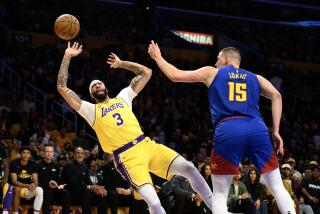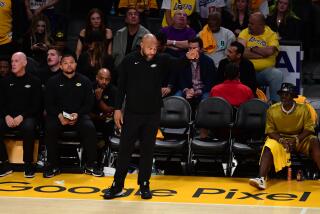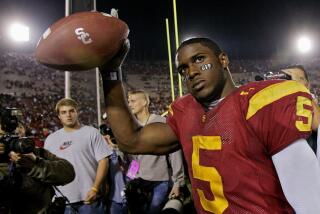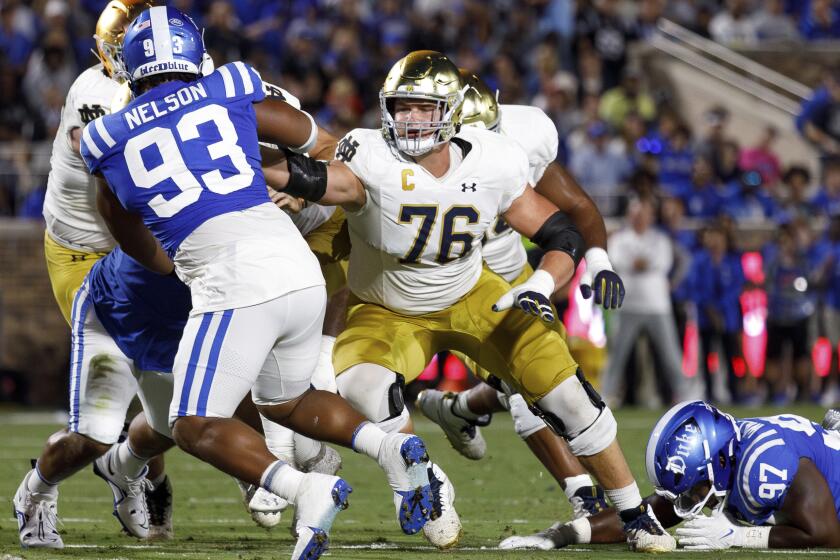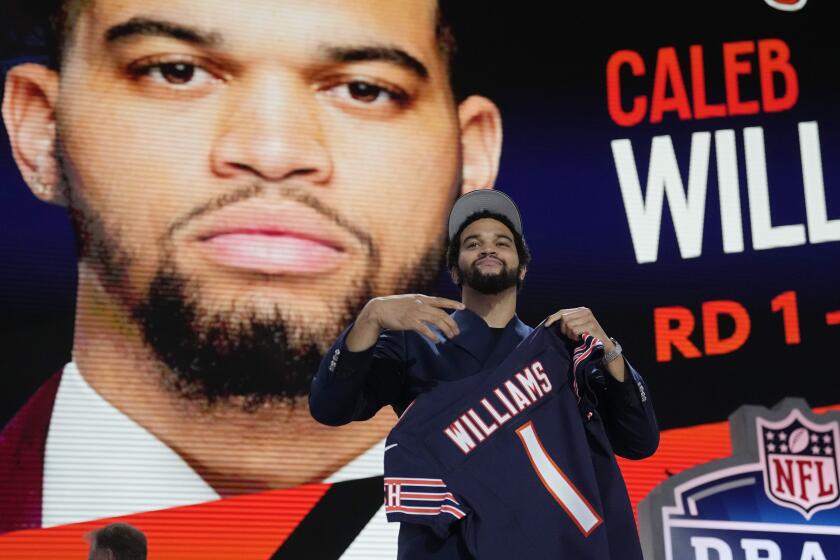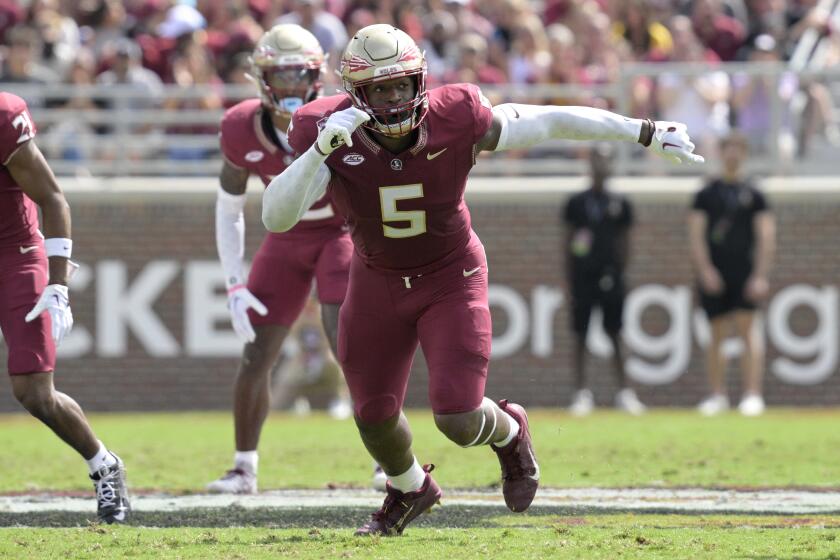West Coast Offense 2.0
In the 16 years since he retired as coach of the San Francisco 49ers, Bill Walsh has watched his West Coast offense go national.
Six of the last 10 Super Bowl champions, including the Green Bay Packers, Denver Broncos and Tampa Bay Buccaneers, have run some variation of the short passing attack closely associated with the 49ers that won three Super Bowls under Walsh.
But today’s West Coast offense looks much different from what Walsh concocted in 1970 as an assistant with the Cincinnati Bengals to cater to a weak-armed quarterback named Virgil Carter.
“It’s been long enough now that we all have moved away and tinkered with it,” said Seattle Coach Mike Holmgren, who served as Walsh’s quarterback coach with the 49ers and contributed to its proliferation by mentoring coaches such as Philadelphia’s Andy Reid and Tampa Bay’s Jon Gruden. “It doesn’t resemble, too much, what we did in ’88 or ’89. It’s OK to call it that, but if you’ll excuse me it’s kind of a lazy term.”
The changes have come slowly, with each coach putting his own imprint on the offense.
“The pure West Coast came from Bill Walsh,” Reid said. “But defenses have changed since then, and you have different personnel according to the team you’re on.”
The offense began its development when Walsh needed to design a passing game that took advantage of the talents of Carter, a heady, athletic quarterback who lacked the arm strength of Greg Cook, who was injured in his second season with the Bengals. Cook led a deep-throwing offense that had two starting receivers average more than 20 yards per catch in his rookie year.
“The essence of it is (for the quarterback) to have a primary receiver, an alternate receiver and an outlet receiver and then to run. And those decisions need to be made very, very quickly,” said Walsh, who added precision timing to some of the offensive principles of coaching legends Paul Brown and Sid Gillman -- including greater involvement of running backs in the passing game -- to maximize Carter’s effectiveness.
But later, as defenses were able to disrupt the intricate timing of the offense, coaches countered by varying their formations from Walsh’s standard offense with two running backs, one tight end and two wide receivers, said Eagles offensive coordinator Brad Childress.
“Guys like Brett Favre have the shotgun from time to time, which way back when never would have happened,” Childress said. “I think the one-back sets you see are an adjustment. Originally, there weren’t those. (Walsh) would motion them out of the backfield on occasion, but all the one-back, four-wide, empty type of sets are things that have been added on.”
Many of the principles of the passing game remain the same, but are approached in new ways.
“We try to take a principle, like a drive principle (a shallow crossing route that can be broken off to settle against zone coverage with a deeper crossing route behind it), and see how many ways we can do it,” Childress said. “A drive is about the same thing it is here, or in Seattle or Green Bay, and is probably one of the tenants that hasn’t changed much.”
Some changes came in the running game, much to the dismay of Walsh, who feels today’s lineman have gotten too big to run the sweeps and traps that were staples of his original West Coast offense.
“It’s basically a man-block, shove the guy out of the way, shove him down the line run game,” Walsh said. “We had more trapping, more sweeps. We had much more variation in our running game than teams have today.”
Walsh also contributed to the spread of dual-threat running backs -- players like St. Louis’ Marshall Faulk, the New York Giants’ Tiki Barber and the Eagles’ Brian Westbrook -- who are in the mold of Roger Craig, the San Francisco running back who in 1985 became the first player in NFL history to have more than 1,000 yards rushing and 1,000 yards receiving in a single year.
“Roger was the first player, other than Hugh McElhenny who played 40 years ago, who was a true all-around back,” Walsh said. “We could put him anywhere on the field, wide receiver or anywhere on a given play, and he’d be effective.”
Personnel plays a significant role in the evolution of the offense, coaches and players agreed.
Packers quarterback Doug Pederson described Green Bay’s version as the Midwest offense.
“Now that (coach Mike) Sherman’s here, it’s evolved into a Brett Favre, Donald Driver, Ahman Green offense. It’s evolved in its own way,” Pederson said.
Detroit Lions Coach Steve Mariucci, a former assistant at San Francisco and Green Bay, agreed.
“If you have a drop-back quarterback like a Drew Bledsoe running the West Coast offense, you’re going to run it differently than you would with Michael Vick,” he said. “You try to use your personnel as wisely as you can.”
These changes make the name West Coast offense -- which has its roots on the banks of the Ohio River and is now employed everywhere from Atlanta to Seattle -- a poor description for the current state of Walsh’s system.
“Now it’s the Green Bay Packers, Seattle, Philadelphia, San Francisco, New Orleans Saints (offense),” Pederson said. “Those are teams that have taken the West Coast and made it into their own style of offense.”
More to Read
Get our high school sports newsletter
Prep Rally is devoted to the SoCal high school sports experience, bringing you scores, stories and a behind-the-scenes look at what makes prep sports so popular.
You may occasionally receive promotional content from the Los Angeles Times.
